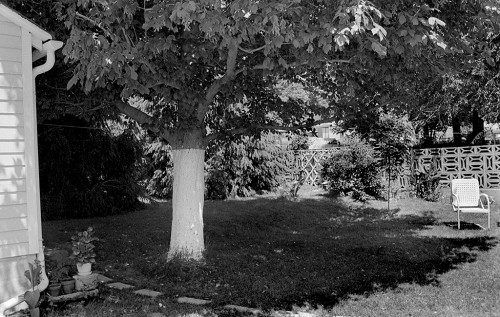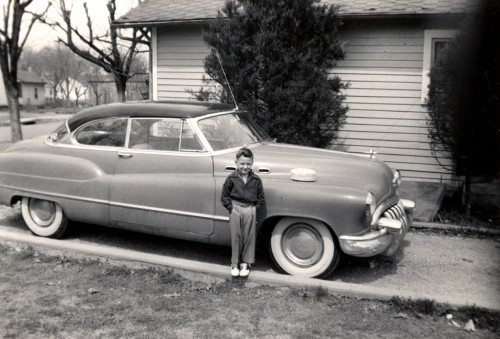When we hear people talking about a whitewash today, we generally think of “a metaphor meaning to gloss over or cover up vices, crimes or scandals or to exonerate by means of a perfunctory investigation or through biased presentation of data. It is especially used in the context of corporations, governments or other organizations.”
When we’re talking about trees like the one in this unknown back yard, “whitewash, or calcimine, kalsomine, calsomine, or lime paint was a low-cost type of paint made from slaked lime (calcium hydroxide) and chalk” was applied to the bark in the springtime.Click on the photos to make them larger.
Whitewash was also used by for painting barns and the interiors of low-income apartment hallways. It wasn’t good for this purpose because it had a tendency to rub off onto clothing. It was associated with poverty in an old saying that I don’t recall hearing in Southeast Missouri, “Too proud to whitewash and too poor to paint.”
Painting the elm trees
When I was a kid visiting my grandparents in Advance, it was a springtime custom for my grandfather, Roy Welch, to paint the elm trees lining the yard on Cypress Street with whitewash. Some folks say that it was to prevent “sun scald” or to protect the trees from insects. It didn’t do anything to keep Dutch Elm Disease from wiping them all out. I think it was done for cosmetic reasons.
This photo was taken on my fourth or fifth birthday, which would have been in March. That’s too early for the the trees in the background to get this season’s fresh coat. You can see that most of the white from last year has washed off.
So, is it still the custom to whitewash trees anywhere today? I can’t think of the last time I’ve seen it done.


